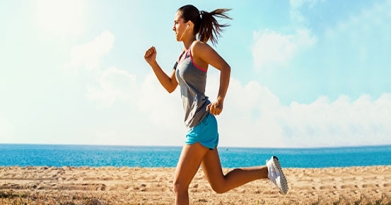
Patellofemoral pain syndrome, known as runner’s knee, is the damage at the meeting point of the kneecap and the thighbone. Mostly athletes who run or put a great strain on their knees are the victims of this condition. Rest and elevation may seem to reduce pain and symptoms, depending on the condition it is likely to make a full recovery. People affected by runner’s knee should seek orthopedic treatment before returning to regular physical activities and sports.
Runner’s knee treatment is needed for an individual who has developed a pain in the knee from wear and tear activities such as running, walking, biking and jumping. It is most often seen in women than men, and becomes aggravated after completing a run or soreness from bending the knee for a lengthy time period.
There are many factors that lead to the development of this syndrome, and determining the root of the injury is what Dr. Dee specializes in. Careful evaluation and consultation can prove the cause of the injury, while respecting the limits of the patient’s body.
What Does Runner’s Knee Feel Like?
People do not realize that they have runner’s knee, because the presence of a sharp, severe pain is not experienced. Instead, people experience a dull and persistent pain after mobility actions or discomfort in flexibility. The knowledge and evaluation of an orthopedist like Dr. Dee can determine the significance of the injury and apply necessary treatment. Symptoms of runner’s knee include:
- Pain behind or around kneecap
- Pain when the knee is bent
- Increase of pain when walking downhill or downstairs
- Swelling
- Popping and grinding sensations
Causes of Runner’s Knee
There is no universal connection as to why people develop the disorder. Biomechanical issues, such as the patella sitting too high in the femoral groove or easy dislocation. Worn cartilage in the knee joint reduces shock absorption or knees that turn in or out excessively can pull the patella from side to side.
Muscle issues can also be the reason for injury. Tight hamstring and calf muscles put too much pressure on the knee to perform. Weak quadriceps can cause the patella to fall out of alignment. Runner’s knee can be linked to several issues including:
- Knee malalignment
- Dislocation
- Flat feet
- Previous knee injuries
- Infection of the joint
According to an article from Gait & Posture, a publication dedicated to provide research and scientific knowledge related to gait and human movement, lots of mature women develop ailment problems with their knees. Researchers compared young and old female runners and found misalignment of the knee to be common in older women. As female runners age, their knees will sag inward, bow outward or rotate irregularly.
Forms of Treatment Available
Only the knowledge of a doctor or orthopedist can determine the proper method of treatment. If problems in the knee continue, make an appointment with Dr. Dee for proper treatment. Fortunately there is good news for athletes who experience minor or moderate injuries which should heal over time.
Common conservative steps of treatment include:
- Rest, ice, compression and elevation
- Anti-inflammatory painkillers, such as Advil, Aleve or Motrin
- Stretching and strengthening
- Arch supports for shoes
Dr. Dee may also implement a recovery program which includes corticosteroid injections to reduce pain at the site, physical therapy and in more severe cases surgical options.
Can Runner’s Knee Be Prevented?
Conventional runners have a number of options available to prevent the effects of runner’s knee. They can run on softer surfaces, increase distance by no more than 10 percent in mileage per week, and gradually increase hill workouts.
Visit a specialty running shop to ensure shoes are associated with the runner’s foot type and gait.
Increase strength of quadriceps to improve patellar tracking. Stretching hamstrings and calves regularly will prevent from over pronation, rolling inward.
If you are experiencing symptoms of runner’s knee and wish to seek treatment, visit board-certified orthopedic surgeon Dr. Dee. He specializes in injuries for major athletes and active patients. Discover what treatment is best for you to get back to running quickly for a fit and healthy body.









